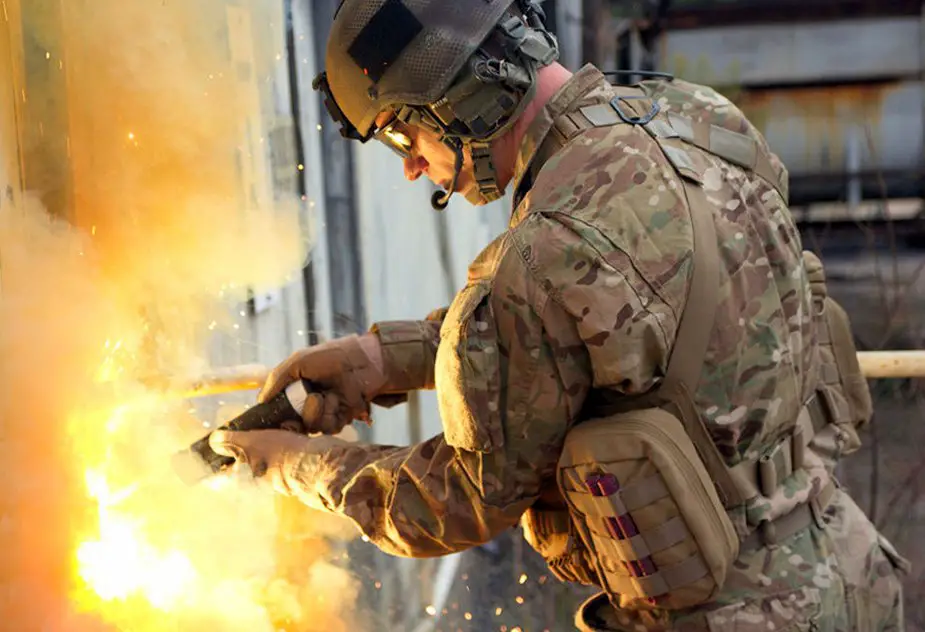U.S. Army testing TEC Torch and more new technologies at Fort Leonard Wood
The U.S. Army has been testing 19 different technologies at Fort Leonard Wood for potential future use by the military, KY3 reports. Among them, what is called a TEC Torch. The TEC Torch allows soldiers to cut through locks, bolts, cable, and other barricades by burning for just a few seconds at nearly 4,000 degrees Fahrenheit. That's 2,000 degrees hotter than lava.

TEC Torch in action (Picture source: EMPI)
On Tuesday, May 7, soldiers demonstrated 12 of those new technologies to reporters. "The purpose of MSSPIX [Maneuver Support, Sustainment, Protection, Integration Experiment] is to consider the military utility of emerging technologies," said Col. Lawrence Burns, Maneuver Support Battle Lab Director.
TEC Torch is the premiere handheld breaching tool for law enforcement, military, and first-response emergency personnel. Combustion products jet through an engineered nozzle for approximately 2 seconds. The escaping jet is a combination of vaporized metal and particulate which quickly heat the target above its melting point and erodes the target material away. Cartridges contain a unique thermite formulation for maximum temperature and velocity for optimized cutting performance. The cutting jet burns hotter than 4000°F. Cartridges are designed to contain this intense pressure and thermal energy safely within inches of the operator’s hand. The cartridge is completely self-contained with an internal igniter. The handles supply a small amount of electrical power to the cartridge for ignition. Handles are designed with redundant safety features to ensure intentional ignition.
The system is designed to be compact: 1.5-inch diameter and an assembly length of 12-14 inches (depending on product options). The system is designed to be safe: in-house and outside testing has been performed to verify function, reliability, and safety. The system is designed to be fast: the 2-second burn-time cartridge was chosen specifically for the largest variety of operational targets. The Rod Cutter cartridge can cleanly cut a solid steel rod up to 0.75-inch (hardened, plain carbon or stainless does not matter). The Plate Penetrator cartridge can create a 0.35-inch diameter hole through a 0.50-inch steel plate. These two cartridge designs can be used in combination and rapid succession to defeat numerous obstacles. The system is designed to be versatile: the back end of the cartridges has a 1.0-inch D x 1.0 inch long coax electrical connector that forms a mechanical joint to the handle. This connector is common to the splitter and extension cables so that the user can quickly assemble an entire system custom to the scenario. Users don't need a large bag of unique parts for each mission.
Besides the TEC Torch, emerging technologies like a protective overhead cover to help protect from direct hits from mortars and rockets - as well as different intrusion detection systems. "This is more of situational awareness," Burns said of the intrusion detection system. "It's a sensor and a situational awareness so you can understand what's happened, in real time, in your area."
Soldiers are also getting to test out two different remote controlled vehicles. One is a Caterpillar bulldozer. "US Army Engineers have relied on D-7 Dozers since World War II," said Fred Erst with Caterpillar. They can even do this without actually being able to see the actual machine. Cameras on the bulldozer allow the soldier to move the dozer to clear pathways for troops to make their way through minefields.
None of these technologies is being purchased by the U.S. Army at this time, but they are testing it out to see if it's something they could use in the future, KY3 concludes.


























